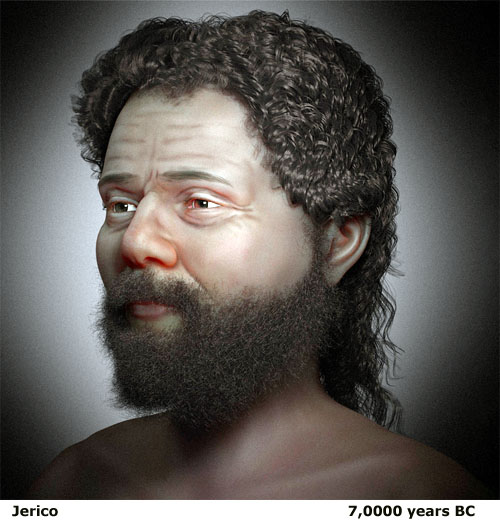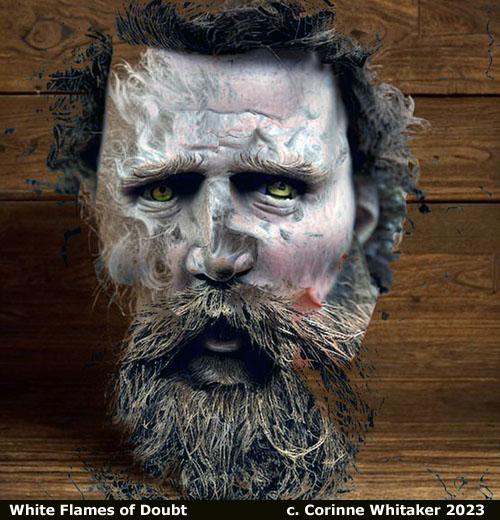
eMusings
Your eyes and ears on the worlds of art, culture, technology, philosophy - whatever stimulates the mind and excites the imagination. We remind you that 20 years of
back issues of eMusings can be found on our archives page.
The hot issue of A.I. continues to evolve, or perhaps explode. Let's start with a few intelligent articles I have found for you:
The Altantic magazine asks the question, "What Happens When AI Has Read Everything?" The articles speaks of hyperpolyglots, usually
referring to people that are able to move fluently between a dozen or so languages. By contrast, AI can now translate over 100 languages in real time. It can even look at ancient texts that are missing passages and tell you what was chipped off by vandals over the years.
The author suggests, however, that we will soon run out of quality prose for AI to translate, quality prose eliminating by definition social media posts. It is estimated, however, that human beings have published more tha 125 million titles since the advent of
Gutenberg. Of these, perhaps roughly 20 million have already been digitized, meaning that AI now has close to a trillion words at its disposal.
Some writers are lamenting how creepy some of the AI human compositions are, until you look closely and discover some disturbing details. They are hopeful that
eventually AI will re-create perfect copies of humans.
This may be a good time to look back at the infancy of digital imaging, before we worry about its adolescence. With early digital art, some artists were striving to make digital images that were exactly like other modalities, like oil
paintings or watercolors. But I felt strongly that what was needed was a new visual iconography, not a copy of other visual systems, but rather a digital language intrinsic to the computer, using its own binary vocabulary. In that vein, I gave a talk
at the Los Angeles County Museum of Art (LACMA) in 1994 called "Look Ma. No paintbrush!". Reactions to the talk ranged from "We knew you'd be good. We didn't know you'd be THAT good!", to "This stuff you're talking about is impossible. It does not exist".
Fast forward to today:
I am not trying to copy or replicate other visual language systems. I want to plunge deep down the rabbit hole and explore, find visual experiences we have never seen before. I want to create new worlds, not carbon-copy old ones.
A complaint has been built into recent lawsuits by artists who object to text-to-image systems that may include their work. Let's not be naive: once you put anything up on the internet you lose all privacy. Privacy does not exist online, so
of course algorithms that continuously sweep the web are designed to scoop up everything out there. The real issue is copyright, designed to protect creative and intellectual output for a specific number of years. (This year, for example, Disney
is slated to lose its copyright protection of Mickey the everywhere Mouse). Lawyers and jurists will have to re-examine the whole concept of copyright protections, and that will take time. In the meantime, check out not only our front page this month,
but the new digital paintings, as well as this month's Quill article titled "Rabbits, Hats, and Ice Cream Castles".
One enterprising developer apparently used the brain of ChatGPT to create a mega-smart "Siri". The results can sometimes be remarkably intelligent and helpful. Unlike
Apple's Siri and its siblings, the new creation is not trained to avoid hurtful, rude or obscene comments. You can build it yourself, with a bit of programminig skill, although there will be a cost of $0.014 per request.
Then there is an investigation by Time magazine, revealing the "shockingly low" wages paid to workers in Kenya (while the company itself may get a $10 billion USD
buyout offer from Microsoft). Additionally, the low-salaried workers seem to have been subjected to heavily graphic sexual material, supposedly to make certain that ChatGPT does not include any violent or hate-filled speech.
Finally (for this month at least, since the drum beat is certain to continue well into the future), a Princeton student
and several others are working to complete an algorithm called "GPTZero", which will distinguish between writing done by humans or that done by AI.
The New Yorker magazine reminds us of a primer that was not AI written and begins, "I went to sleep with gum in my mouth and now there’s gum in my hair and when I got out of bed
this morning I tripped on the skateboard and by mistake I dropped my sweater in the sink while the water was running..." 50 years ago this classic children's book was written by Judith Viorst. Perhaps you will remember its title, which follows
the words quoted above: "Alexander and the Terrible, Horrible, No Good, Very Bad Day". Alexander's mother eventually tells him that some days are like that, and young childrent still respond to that sanguine conclusion.
For a bit of playful surrealism, check out the work of Jerico Santander. Santander, based in the Canary Islands, brings us works inspired by graffiti and Mom surrealism (it's time to upgrade Pop, don't
you think?)
As a dedicated chocoholic, I was intrigued by the idea of a chocolate frog and other unusual species revealed in this article from Mongabay. Mongabay describes itself as "News and
Inspiration from Nature's Frontline". Certainly this article is both informative and colorful, my other favorite species being the Southern Maned Sloth.
Thanks to the Smithsonian magazine we can now see a detailed reconstruction of a man in his 30's or 40's, bearded and brown-eyed. What makes him so
special is that he lived in Jerico about 7,000 B.C.E. Now called the West Bank, Jerico's residents turned 7 skulls into sculptures, using paint, plaster, and shells. The sculptures were buried without any identifying information. Of the seven, one can now be found at the British
Museum. Intense research revealed fascinating details about how this individual may have lived, his food, health, and religious preferences. Look at the 2 images above, both
examples of different kinds of reconstruction, and think about what "real" ...really means.
Marguerite Humeau is fascinated by mysteries. Her thoughts range from ancient civilizations to imagined futures. Her sensuous sculptural forms sometimes seem half human and half creature with an eerie sense of the
organic and the evolving. Her titles reflect this sense of the unknown, like "The Dead, The Dancers, and The Air (A Shoal of fish performing a breathing ritual in an attempt to bring their dead back to life)". Fascinating work.
The phenomenon that was Tallulah Bankhead is perhaps not well known
to theater-goers today, but she was a force unto herself, an outburst of unique energy with her bawdy movements and deeply sensuous voice. Described as the "Humphrey Bogart in silk panties" in one account, and "a wild woman like a caged chimp" in another, she filled the world of stage
and film with her overwhelming presence. Reading about her today is to confront not an actress but a out-sized personality mowing down anything in her path.
The moon and Mars occupy our thoughts today of extraterrestrial journeys and eventual habitation, but there are those who feel that Venus offers a more challenging target for settlement. The second planet from the
sun, Venus has been described as "terrifying": its temperatures reach 860 degrees farenheit, its clouds rain sulfuric acid, and its landscape presents as a foggy yellow desert lavish with volcanoes. Yet it is about the same size as Earth, has gravity similar to ours, and offers a quite
different scenario for cultivation. Of course you couldn't stand on its surface - that would be like diving 3,000 feet under the ocean - but you might think of living in the clouds of Venus. Unfortunately Venus has little water, but you could make it by separating the molecules of
sulphuric acid via electrolysis. Venus has lots of carbon dioxide and nitrogen, which could be used to grow plants and produce food and good air. One NASA scientist and science-fiction writer claims that floating a city about 31 miles above the ground on Venus would not be too
difficult. He also projects a billion habitats, each containing hundreds of thousands of humans. Food for thought, eh?
Lucien Freud is one of our more celebrated artists, exhibited, published, endlessly discussed for his somewhat cynical and downcast portraits, his oversized ego, his exploits with women and gambling. This
article suggests that Freud is less talented than his publicity suggests, based on an exhibition at the National Gallery London called "Lucien Freud: New Perspectives"
.
We know that the age of the noisy, the brash, and the spectacular is upon us, but I think you will agree that this fashion
collection at Paris Fashion week is a show-stopper. The reviewer calls it a "glitch in the matrix". See what you think.
c. Corinne Whitaker 2023

















